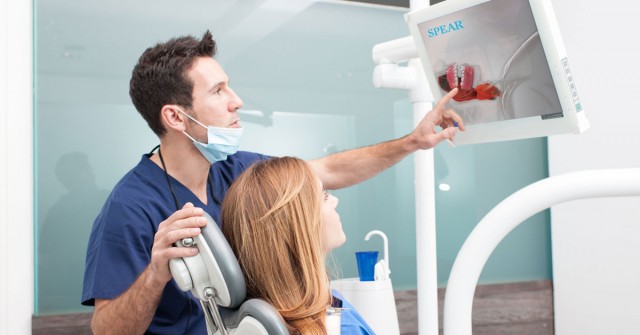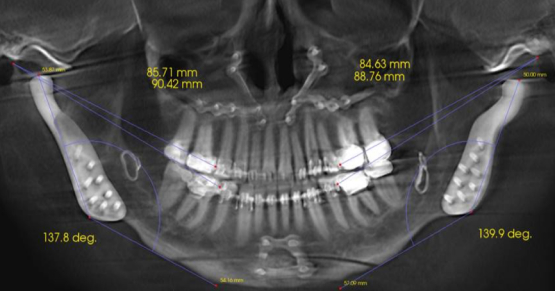Integrating Airway into Your Practice
At Spear Education, our Facially Generated Treatment Planning process begins by asking, “could it be an airway problem?” As such, the practice of dentistry has started to change. The old problem list of bruxism, erosion and malocclusion, is now viewed as symptoms rather than problems. Interdisciplinary treatment decisions include a focus on health, not simply esthetic or functional tooth position.
Our examination, mimicking a traditional cancer screening, includes notations of altered airway anatomy (neck size, nasal irregularities, tongue scalloping, or tonsil size, to name a few). The challenge for the restorative dentist becomes how to integrate these modern concepts into their office.
I have three alternatives based on screening strategies to consider:
1) Utilize Only Subjective Data and Make Assumptions About Resolution
In this scenario, the practitioner gathers appropriate airway and sleep data, screening questionnaires, airway interview questions and anatomic examination. Dentists acknowledge that the airway could be the issue and follow a protocol for symptom control.
The “Seattle Protocol,” which I developed with my fellow Spear Resident Faculty member Dr. Greggory Kinzer to recognize, control and direct resolution of airway distress in a restorative dental practice, would be an example of this strategy.
If the strategy is working, then assume that the airway is improved. Quality of life questions, like if the patient is more rested and how their snoring is, become the benchmark for completion or alternative care.
The Seattle Protocol strategy does not involve the purchase of screening tools and, importantly, it does not include the risk of diagnosing airway issues. While the ADA supports the use of screening tools in dental offices, many state dental guidelines are still being developed.
This strategy does, however, lack the objective measures that can assist in promoting and providing optimal care to our patients.
2) Screening Tools in the Examination and Titration Protocol
Include screening tools into the examination and titration protocol, while keeping the initial examination the same. At the conclusion of the exam, the patient is allowed to utilize an objective screening tool.
“Mr. Smith, many of the issues that we have uncovered today could be linked to a dysfunctional airway that can be especially compromised when you sleep. In our practice, we offer our patients a free sleep screening for these issues. Would you like to participate in that screening for two nights to complete your dental health examination?”
An important note: always refer to this as a sleep screening and not a sleep study. The distinction is necessary to make.
The initial screening allows us to develop a baseline of disease from which to evaluate the success or failure of our treatment. If the data indicates a sleep issue, the patient must be informed to follow up with their physician. This should be noted in their chart.
While the choice of device can vary significantly from audio recordings to home sleep monitors, the two screening devices that I currently recommend are high-resolution pulse oximetry and cardiopulmonary coupling. Videos on both tools are available on the Spear Online platform. They allow us to just do dentistry and determine if we have impacted the airway.
In 2016, the American College of Prosthodontists highlighted that restorative dentistry can be so complex, time consuming and expensive that every patient seeking care should be examined for breathing issues before they begin treatment.
They also noted that even the fabrication of a nightguard should be accompanied by an apnea evaluation, since half the appliances will worsen the airway. Given the ACP standard of care, airway screening tools make sense in the modern dental office.
3) Create a Sleep Dentistry Practice Within a Restorative Office
In this model, a patient found by examination is referred to a sleep physician for a diagnosis. If they return with a letter of medical necessity for a sleep appliance, they become a “sleep” patient of the practice.
Relationships with sleep physicians can also garner additional patient referrals from outside your dental practice. There are unique software programs that assist the dentists in gathering data and creating subjective, objective, assessment and plan (SOAP) letters for medical referrals and billing medical insurance.
The goal is to create mandibular advancement appliance. Screening tools may be utilized to identify candidates for therapy and determine if the appliance is effective. This design demands a significant change in the functions of a practice but can provide additional reliable revenue streams.
Most of the courses at Spear end with participants saying, “now what do I do?” The first thing to realize is that the most challenging part is over. You have acknowledged that what you learned is much better than your current patterns and beliefs that you are willing to accept change. And change is tough to embrace. It requires time, focus and commitment.
SPEAR campus
Hands-On Learning in Spear Workshops
With enhanced safety and sterilization measures in place, the Spear Campus is now reopened for hands-on clinical CE workshops. As you consider a trip to Scottsdale, please visit our campus page for more details, including information on instructors, CE curricula and dates that will work for your schedule.

By: Jeffrey Rouse
Date: August 29, 2019
Featured Digest articles
Insights and advice from Spear Faculty and industry experts



